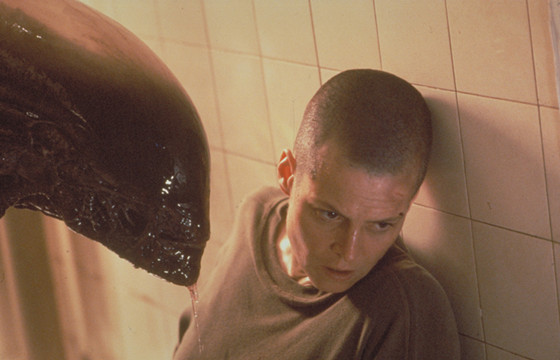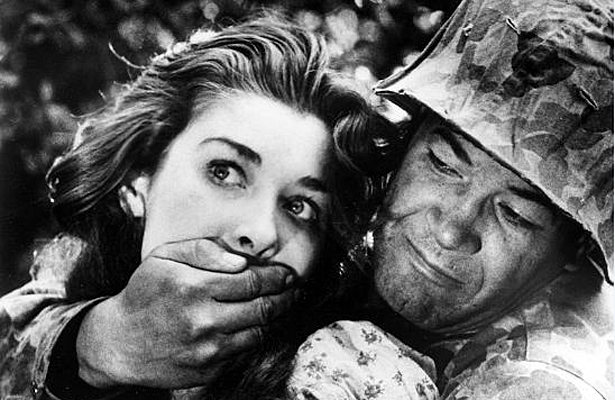
When a Hollywood movie is helmed by a single-minded creative force, a myriad of things can occur that trouble production all the way from screenplay to theatrical debut. Some directors are clouded by hubris (both on-screen and off), some dabble too frivolously with experimentation, and of course, some have their vision all but destroyed by calculating businessmen who prioritise profits over artistic merit.
In a lot of cases, directors will disown a movie of which the final edit was not representative of their initial vision with the tongue-in-cheek pseudonym Alan Smithee, but some projects are viewed by their progenitors with such disdain, such lurid bile, that this term is not aggressive enough and further steps had to be taken to keep the product forever in the shadows.
Here, we see six of the best examples of films you will find that were disowned by big-name directors as well as the broad strokes suggesting why the need for such action based on their character and the circumstances of production. Not one of these examples is without some artistic merit, but these directors wanted their movies dead and buried, and now they can be unearthed and enjoyed by film analysts and general audiences alike.
1. Alfred Hitchcock – Rope (1948)

For the uninitiated, which may be a majority since Hitchcock actively spent north of 30 years burying this film, ‘Rope’ was an experiment in which Hitchcock could tell a story that would unfold via a series of dispelled cuts employed every ten or so minutes to create the illusion of one continuous piece. Or as Roger Ebert would infamously deem it, ‘an experiment gone wrong.’ A sentiment with which Hitchcock himself agreed.
Often ostensibly cited as an adaptation of a real life ‘perfect crime’ story of Leopold and Leob in 1924, ‘Rope’ is more accurately a fresh exploration of Nietzsche’s ‘Ubermensch’, while also borrowing heavily from theatrical productions of the 1920’s.
In brief, ‘Rope’ is a murder plot, whereby the two guilty parties would host a gathering with guests comprised of the recent victims closest friends and family, whom throughout the 80 minute runtime engaged in either saccharine small talk about dinner placements or heady themes such as intellectual superiority, all while their recently deceased loved ones corpse remained hidden in plain sight. The object of which is to pull off the perfect murder, thus proving how intellectual superiority trumps moral objection. Many films had run in real time before ‘Rope’ but none that forewent jump cuts in order to evoke the feeling of a play.
The story is simple and the script tight and often witty, so the project was seemingly ripe for this kind of experimentation. To pull off this technique, Hitchcock had to rely on precise timing of more deliberate camera work, which despite his self-criticism often times worked perfectly adequately – the scene in which a two-way swinging door teases the audience with quick glimpses of activity in another room is particularly outstanding.
Why then, is this Hitchcock’s failure? The answer lies with the camera. When employing such a technique for a feature length time – and for the first time in mainstream cinema history at that – the camera itself often loomed as if it were an uninvited guest, torn between remaining still, by which it would appear stagnant, or moving but only tentatively so as to not disturb the scene too much. Either way, there was simply nowhere the camera could be without drawing attention, and by definition more attention means less immersion.
Hitchcock infamously coined the phrase ‘there is no terror in the bang, only in the anticipation of it’ and no movie best exemplifies this than Orson Welles ‘Touch of Evil’ where escalating jump cuts between a car bomb and its would-be victims keeps its audience in abject tension that only perpetuates over the 3 minute scene. ‘Rope’ on the other hand seemed poised not to accommodate this kind of build up as the audience is handcuffed to only one camera for the duration of the plot.
A plot that was largely considered pedestrian by audiences, and more importantly one that was not elevated by this choice in direction. Directors, particularly ones of suspense, need to be steps ahead of their audience to ensure a satisfactory pay-off, but ‘Rope’ and its story was one that walked side by side with its audience, with little room for surprise or supense.
The shame of it all is that Rope’s exploration of Nietzsche’s Ubermensch came about a mere three years after the fall of Nazi Germany and as such was a contemporary theme that few dared to touch upon so critically.
In all likelihood Rope’s climax with the immutably talented Jimmy Stewart deriding the film’s antagonists for daring to exercise their God complex by way of callous dismissal of human life was all too real a scenario so close to the end of World War II, and if ‘Rope’ had been reimagined in a style that played to the strengths of the plot, Stewart’s closing diatribe could perhaps be cited nowadays in the same vain as Chaplin’s similarly empowering ‘Look up, Hannah’ speech in ‘The Great Dictator’.
‘Rope’ was not an experiment gone wrong, just an experiment confined by its limitations, and the powerful truths it expressed in its dialogue renders it far from the misstep it has been deemed. Time has been far kinder to ‘Rope’ than suggested.
2. Stanley Kubrick – Fear and Desire (1953)

‘Pain is a good teacher.’ If these words of Stanley Kubrick are to be believed, ‘Fear and Desire’ must have been medieval levels of excruciating for him, since it would not be long after he burned the original negative for the film that he’d continue, seemingly undeterred by his failure, and become the world’s leading visionary director.
If whatever lessons in pain Kubrick derived from the experiences he underwent making ‘Fear and Desire’ were used in full force to fuel masterpieces of a similar ilk like ‘Paths of Glory’, ‘Dr. Strangelove’, and ‘Full Metal Jacket’, then it could well serve as a prelude to his greatness rather than the shameful blemish he had propped it up to be when reflecting on his career. Kubrick may have less than kind things to say about his 1961 ‘Spartacus’, but ‘Fear and Desire’ was his debut movie, showcasing his talents at their least honed. But a bad Kubrick movie does not equal a bad movie so much as a perfunctory one with glimmers of greatness sewn in.
The reasons for the failure of this movie are fairly self-evident. Then 24-year-old Kubrick cobbled together ‘Fear and Desire’ with a mild self-financed budget of $20,000, with which he had to shoot in outdoor locations that precluded the use of even the most rudimentary tools such as a tracking dolly (A baby carriage was reportedly used instead.) With confines like this and with little in way of a reputation to use as leverage with any studios for further financing, Kubrick merely finished the film without combing over it in his notoriously perfectionist fashion, foregoing revision as he was instead more eager to have it developed and distributed.
When asked to reflect on the piece in a later interview, Kubrick recalled “a serious effort, ineptly done”, a statement agreed upon by critics and audiences at the time, whom quickly forgot the movie once digested. Some were even said to have laughed at some segments not intended for humour, but this is often indicative of a weak script rather than weak direction, which is worth noting for the fact that of all of his movies, this stands out as a rare instance where Kubrick did not write the screenplay as well.
So if this awful first experience was in fact the turning point whereby Kubrick assumed full creative control over all of his future projects then in spite of its amateur-level quality, it can at least be credited for catalysing Kubrick’s methodology and given the staggering and unparalleled creativity that he provided audiences in the form of enduring, masterful films such as ‘2001: A Space Odyssey’, that is not something to dismiss.
‘Fear and Desire’ may have failed as a film, but it was a necessary failure for how it developed the man behind the film; a lesson not often afforded to directors who are similarly ashamed of their sloppiest work. In Kubrick’s case it provided a crossroads, and thankfully he continued on a prominent path because of it.
In spite of his efforts to eclipse it from the masses, however, a print was discovered in 2010 in a laboratory in Puerto Rico, and since falling into public domain it is now readily accessible to anybody inclined to see a rough cut of a first effort from a man as notoriously perfectionist as Kubrick. The morbidly curious ought to see the film through, and its succinct hour-long runtime already generates some goodwill for treating the audience’s time with respect.
For others however, there is not much to be gleaned from this piece. As a film it doesn’t seem to serve any particular demographic, but as a piece of Kubrick’s history it serves only to be picked apart by those who wish to see a glimpse of the director’s fallibility not seen anywhere else.
3. David Fincher – Alien 3 (1991)

‘Alien’ and ‘Aliens’ are seminal masterworks in the horror and action genres whose iconic Xenomorph character has been reimagined across all media from comic books to video-games to several concurrent movie series’. It is a real testament to H.R. Giger’s unparalleled creature design that the Xenomorph has not only been a cultural mainstay for almost 40 years, but one that has not been featured in a great movie since 1986.
But before the series malformed into the convoluted waste it is today, Alien 3 was poised to round out the trilogy by hiking the stakes up to then unprecedented levels, and is a tragic entry into the Alien saga due to the amount of craftsmanship that went into it that ultimately was cut or compromised at the request of the studio.
The original teaser trailer implied that early in pre-production, the plan was for the Xenomorph to wreak havoc on citizens of Earth – the next logical step for this series. This plan was dropped, but would later manifest itself in the form of the non-canon Alien Vs Predator sub-series, but the less said about those, the better.
The reason for this teaser, and the reason it does not keep in line with the final version of Alien 3 is that shooting had begun without a complete script, and with the reins of production changing hands so many times the idea was ultimately dropped in favour of the more dystopia-meets-medieval tale audiences received.
It is not unheard of in Hollywood to begin shooting an unfinished script, but Alien 3 was mismanaged and intervened with so frequently that the project was barely completed by now-renowned David Fincher who in his directorial debut had tangled with the studio at every step of the way. He has since disowned Alien 3 entirely.
The issue here is a matter of pedigree. Fincher and his crew treated the material as a character study, with the Xenomorph activities occurring in the background so as to elevate the internal struggles of recurring protagonist Ellen Ripley while still providing audiences with a blend of horror and action that the series was known for. Over the course of three films, Ripley transitions from unlikely hero to protective mother figure and now with seemingly no end to her run-ins with the Xenomorph, must sacrifice herself – the logical end to her ‘cursed’ arc that would neatly round out the trilogy. In theory and in practice this was the appropriate direction for the third movie.
The studio executives however were aware of the cultural phenomenon that the series had become, and were uneasy about killing off the protagonist for fear that it would off-set any future instalments, should they wish to churn any more out. Which, of course, they did rather liberally. Previous directors Ridley Scott and James Cameron had similar executive meddling to contort with, but unlike them, Fincher was not yet established and so had very little clout with which to wield.
As such, when the studio meddled with his 144-minute cut, they saw fit to trim the Second Act by a full 30 minutes, losing much of the weight Fincher and his writers had lent the characters. ‘Alien 3’, as Fincher projected, began as an interesting insight of a lone female locked in an all-male environment comprised exclusively of hardened criminals, who now with the looming threat of a Xenomorph must reluctantly work together with only rudimentary tools at their disposal. This back-to-basics approach neatly contrasted the well-equipped, gung-ho militia against swarms of Xenomorphs from the prior entry to the series.
The prisons inhabitants were all doomed to a life of thinking on their sins, allowing for heady themes and religious iconography, implying the Xenomorph is the manifestation of abject horror serving as recompense for their evil ways, which worked thematically since the reason for the Xenomorph’s popularity outside of the franchise is exactly that is an embodiment of abject horror.
Cutting so much of the slower scenes so as to maximize profits (since shorter films can be played more times in a day), too much characterization was lost and effectively ‘Alien 3’ no longer represented Fincher’s vision. Since helming cinematic triumphs like ‘Se7en’ and culturally adored gems like ‘Fight Club’ not long after, it isn’t hard to see why his ill experiences on the set of ‘Alien 3’ led to him distancing himself entirely.
Conversely, some decisions made by Fincher himself also harmed the picture overall. ‘Alien 3’ introduced the franchise to a CGI-enhanced Xenomorph and also dedicated some scenes to rough looking point-of-view shots from the Xenomorph, neither of which served the otherwise gritty aesthetic, painting the Xenomorph often in a cartoonish manner that undermined it as a threat.
These could well be overlooked however since bold decisions like that may have been wrong but they were wrong in spite of good intentions, whereas hacking away at a visionary script for the sake of streamlining a movie is a wrong decision made for the wrong reasons. It is far easier to overlook the former.
The 144-minute version is available online, and in lieu of the constant downward spiral the series has experienced since ‘Alien 3’ it is actually on course to achieve cult status. Nevertheless, this is still one that Fincher wishes not to be associated with, but mercifully was not an experience so unpleasant as to deter him from film-making altogether.